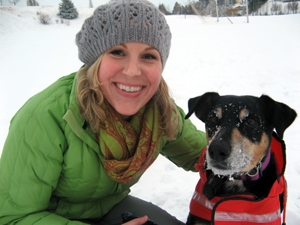
Forget the sedatives and other medications. Bring on the shelter dogs!
The Spokane, Washington Humane Shelter has a new source of volunteers – local teens in treatment for drug and alcohol abuse. The teens are part of a research study headed by Washington State University doctoral student Lindsey Ellsworth. She works with teenagers at Excelsior Youth Center (EYC), a treatment center for teens who have abused drugs and alcohol. Instead of going the usual route of prescriptions and activities, Ellsworth is prescribing shelter dogs as a new, mood-boosting therapy. And the kids are responding!
The Spokane Humane Society (SHS) brings four dogs to the EYC where a group of teen boys await the canines’ arrival. The boys will spend the afternoon brushing, feeding, playing with and generally caring for the dogs. The dogs get a great field trip and the boys get a wide range of positive side effects from increased joviality to energy and just plain happiness.
This study is one of the first of its kind. Ellsworth is investigating how dog interactions improve the mood of teens living in treatment centers. She has arranged the study to compare teens who interact with the dogs and those who don’t.
Once a week when Ellsworth visits EYC she puts a group of eight kids into two groups. One group does the usual recreational activities such as play pool, video games or basketball. The other group interacts with the dogs.
Participants of both groups fill out a form before they get started with their recreation. The form has participants complete 60 questions about their moods. The questions are arranged on a one to five scale known as the PANAS-X, an instrument to scale and study emotion. After the activity the participants fill out the form again.
Dog lovers will probably not be surprised to find out that those teens who spent their time with the dogs had an increase in a lot of positive emotions including joviality, serenity and attentiveness. Moreover, the dog interactions also decreased sadness. Ellsworth also reported that the boys were calmer with less hyperactivity and fewer outbursts.
When Ellsworth is asked why the interaction with the dogs does so much to calm and lighten the moods of the teens she hypothesizes that the natural feel-good chemical in the human brain, dopamine and opioids are produced as the boys wait for and interact with the dogs. Using natural stimuli like dogs, she said, could help restore the normal function of these critical chemical messengers after the brain’s chemistry has been altered through drug use.
The National Institute on Drug Abuse is actively looking for science-based behavioral interventions to help those struggling with drug abuse. Dogs could be the answer to that search. Instead of medications that have their own negative side effects, perhaps a few hours of dog care and play could help teens return to regular life without the potential for returning to drug abuse.
It’s a win-win for everyone. The teens learn to be normal without drug use and the dogs get some quality time with humans. Here’s big barks for Ellsworth!
